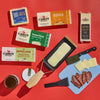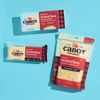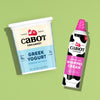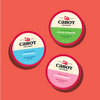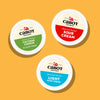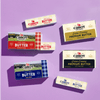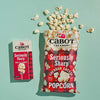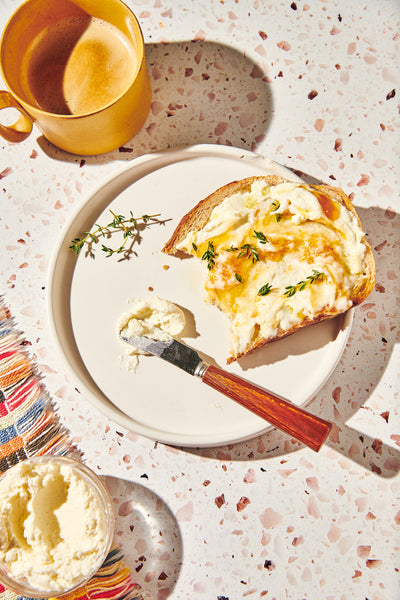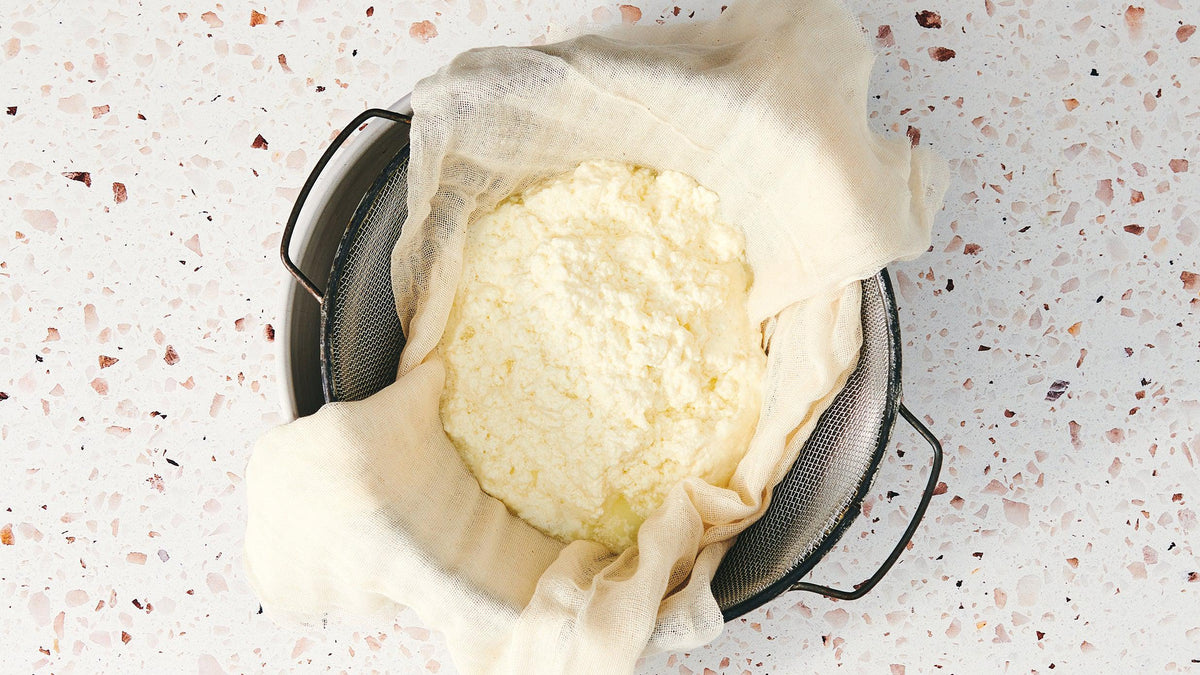
What Is a Cheesecloth? Uses, Substitutes, & More!
Cheesecloth is a thin, gauzy cotton fabric with a loose weave. It was first used in cheesemaking but has many other kitchen functions, from straining berry puree to broths to nut milks. This adaptable tool is now a staple in many kitchens.
What is Cheesecloth?
Cheesecloth comes in a range of grades with thread counts from 10 to 100. The lower the thread count, the more open the weave, with fewer threads per inch. Lower thread counts allow liquid to pass through quickly and generally require multiple layers to strain out solids effectively. High thread count cheesecloth is tighter, heavier and strains out more solids. This leaves behind a smoother, purer liquid but takes longer to accomplish. You can purchase a white, bleached version or the unbleached, beige variety.
Traditionally, cheesecloth was most often used to separate the solid cheese curds from the liquid whey in cheesemaking. Cheesecloths allowed the whey to pass through the fabric and held the solids together to form the cheese. Over the years, more uses for cheesecloth were discovered and now it's often used in the kitchen for straining, shaking, and storage.

Versatility of Cheesecloth
Are you wondering, what is cheesecloth used for? It's a favorite tool in the culinary industry because of its versatility. Straining is arguably its most important job, but far from its only use. Some of the most common kitchen applications are:
- Straining: Standard mesh sieves and kitchen strainers often aren't fine enough, but cheesecloth gets the job done. Try your hand at making ricotta cheese, strain your soup stocks, or even use it to easily juice lemons without the pulp or seeds.
- Shaking: Cheesecloth serves well as a sifter for flour or confectioners' sugar. Just cover a jar of flour/sugar with cheesecloth, secure with a canning ring/rubber band. The woven fabric sifts flour or dusts desserts finely.
- Storage: Cheesecloth is an excellent storage solution for food items like greens and hard cheeses, allowing moisture to escape and air in to prevent spoilage, while also acting as a protective cover against insects for fresh produce.
Other ways to use cheesecloth include:
- Cold brew: Cheesecloth is perfect for straining coffee into a pitcher without getting the grounds everywhere.
- Custard: Finish off homemade custard the right way. Straining it through cheesecloth eliminates air bubbles to give you a smooth, creamy custard. You can also strain plain yogurt to create delicious Greek yogurt.
- Broth: Remove chopped foods, bones, and impurities from broths and stocks with cheesecloth.
- Puree: Cheesecloth is also great for straining out seeds from a fruit puree. Or, wrap pumpkin puree up in a few layers to drain away excess water and leave you with the ideal consistency.
- Herb bundles: If you love to cook with fresh herbs, cheesecloth is an excellent tool. Create a bundle of your favorite herbs and toss into a stockpot to flavor soups and stews. Once the aromatics do their job, just lift out the entire bundle. You get all the flavor without needing to scoop out the stems.
What Can You Use If You Don’t Have Cheesecloth?
If you start a recipe and find you're out of cheesecloth, you've got several options. While the real thing typically does a better job, in a pinch, you can grab a cheesecloth alternative from this list of substitutes:
- Paper towels are probably the easiest cheesecloth substitute as it's a staple of nearly every kitchen. Place a dampened paper towel inside a strainer to get a finer strain. Keep in mind that paper towels, especially when wet, aren't as durable as cheesecloth and may break.
- Coffee filters are another excellent choice. Like paper towels, be sure to dampen them before using to prevent them from absorbing the liquid you strain.
- Thin fabric can do the trick also. If possible, choose a piece of muslin. A thin kitchen towel can also work. Avoid using anything too heavy since thicker cloth won't allow liquid to pass through it easily.
- Gauze is great for small jobs. Medical gauze it thinner than cheesecloth though, so use several layers.
- A clean sock is yet another easy substitute for cheesecloth. The breathable, woven fabric makes an acceptable replacement for most tasks.
Should You Wash Or Throw Away Cheesecloth?
It's possible to reuse your cheesecloth multiple times. This works best when you purchase a cloth with a thread count of 60 or higher. More delicate cloths may fall apart with repeated use.
Kitchen use and contact with a variety of food items can stain the cheesecloth or leave behind bacteria, making it essential to clean the cloth thoroughly after each use. Wash the cheesecloth by hand in hot, soapy water and rinse well. Wring out the excess water and allow to air dry. Better yet, boil the cloth for 5 minutes to make sure all germs get cleaned away to prevent possible contamination of your food. If your cheesecloth has stubborn stains or bits of food stuck to it, let it soak in a solution of hot water and baking soda for about 30 minutes before washing.
You can also clean cheesecloth in the washing machine. Rinse the cloth out first to remove any bits of food. Wash it in a cycle with other cloths to prevent tearing or other damage. For best results, use a delicate detergent. Toss the cheesecloth in the dryer afterward. No matter which cleaning method you prefer, store freshly washed and dried cheesecloth in a plastic bag to keep it clean and ready for the next use.
The Bottom Line

Cheesecloths are an essential kitchen staple for everyone from novice cooks to gourmet chefs. Keep a few on hand to strain berry puree for topping desserts, to infuse flavor into broths with herb bundles, or use to wrap up leftovers. The applications are nearly endless.
Don't forget to pair your favorite culinary creations with some award-winning cheeses from Cabot Creamery! Together, they can make a memorable meal the whole family will love, or an impressive spread to entertain guests!
Put that cheesecloth to work with our how to make your own butter guide and be sure to check out our delicious recipe for Homemade Ricotta.
